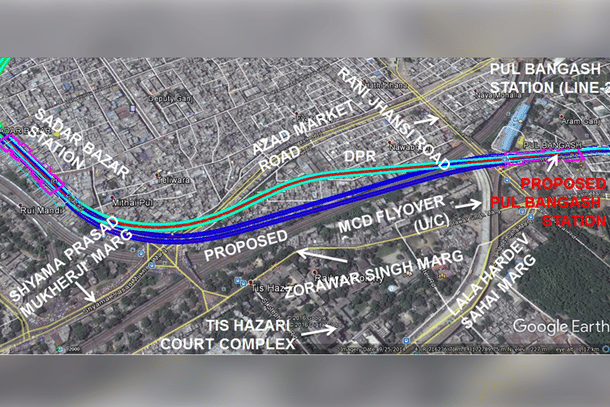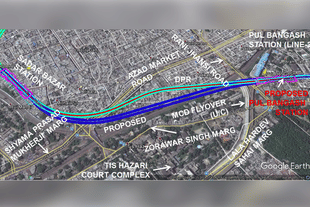News Brief
DMRC's Most Ambitious Project: Nearly Half Of Delhi Metro's Phase-IV Expansion Includes Underground Construction
Arjun Brij
Dec 26, 2024, 12:09 PM | Updated 12:09 PM IST
Save & read from anywhere!
Bookmark stories for easy access on any device or the Swarajya app.


The Delhi Metro Rail Corporation (DMRC) is undertaking its most ambitious underground construction to date as part of its Phase-IV expansion, which involves laying 86 km of new metro lines across five corridors. Of these, 40.1 km will be underground, marking a significant engineering milestone.
The three priority corridors under this phase are Janakpuri West–RK Ashram, Majlis Park–Maujpur, and Aerocity–Tughlaqabad. Work on two additional corridors, Inderlok–Indraprastha and Lajpat Nagar–Saket G Block, is in the pre-tender stage. Notably, the Lajpat Nagar–Saket G Block and Majlis Park–Maujpur corridors have no underground sections.
The Aerocity–Tughlaqabad (Golden Line) corridor presents one of the most complex engineering challenges. Its alignment will pass below 17 pairs of railway tracks between Tughlaqabad and Tughlaqabad Railway Colony stations, spanning a breadth of 110 meters.
"While Delhi Metro lines have passed below railway tracks in the past, this will be the first time the alignment crosses such a wide stretch of railway lines," said a senior DMRC official.
DMRC has achieved several tunnelling milestones during this phase. The 3-km-long tunnelling drive from Derawal Nagar to Pulbangash on the Janakpuri West–RK Ashram corridor is the longest in DMRC’s history, surpassing the 2.65-km drive on the Golden Line from Tughlaqabad Airforce Launching Shaft to Maa Anandmayee Marg. In comparison, the longest tunnel in Phase-III was a 1.6-km stretch between Ashram and Nizamuddin.
Tunnelling work is being executed using Tunnel Boring Machines (TBMs), which allow construction without disturbing surface structures. "This is a major engineering challenge as the underground corridors pass through densely populated residential and commercial areas such as Sadar Bazar, Nabi Karim, Mehrauli-Badarpur Road, and Ajmal Khan Park," said an official.
To ensure safety, DMRC has implemented close monitoring of tunnelling operations. Necessary instrumentation has been installed to regularly assess the condition of buildings in these areas.
The DMRC’s use of conventional cut-and-cover technology for underground stations and TBMs for tunnels reflects a blend of tried-and-tested methods and modern innovations, enabling the project to navigate complex urban environments efficiently.
Arjun Brij is an Editorial Associate at Swarajya. He tweets at @arjun_brij





